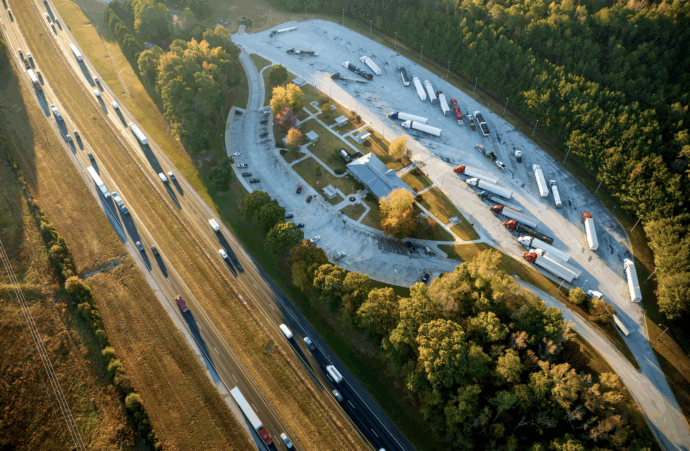Planners must make data-driven recommendations for new transportation infrastructure or road network improvements with a comprehensive understanding of vehicle movements in their regions. To facilitate this, data must be highly thorough and accurate in order to run effective traffic analyses. But does the vehicle data collection method make a difference in the analysis?
When it comes to collecting vehicle data, there are two generally accepted methods. One is connected vehicle data (CV data) from a telemetry source (like Geotab). This type of data uses actual engine-level data that is granular. It will contain contextual information like vehicle classification (Class 1-8), engine type (ICE, EV, PHEV) and more accurate GPS location information. It is very precise because connected car technology lets equipped vehicles send their location and other data directly to a manufacturer or fleet center.
The second data collection method is location-based service data (LBS data). Generally built on mobile data from cell phones and other mobile applications, LBS does not provide visibility into the contextual vehicle information described above with CV data. LBS data will instead infer the type of vehicle (i.e., it could be a heavy-duty truck based on how it moves) but lacks a definitive method to confirm the details.
LBS provides planners with enough insight to know that a vehicle drove down a particular road at a specific time but does not provide insight into vehicle class, engine type, etc. LBS is also more susceptible to GPS drift, a term describing a discrepancy between your actual location and the location recorded by a GPS receiver. LBS can be prone to over-counting biases or capturing duplicates if multiple connected phones are inside a vehicle.
Here’s a breakdown comparing the two data collection methods:
| Connected vehicle Data |
Location-based services data |
|
Generated by vehicles equipped with various sensors or telematics systems
|
Derived from mobile devices equipped with GPS or other positioning technologies.
|
|
Includes data collected from the vehicle’s internal systems, such as classification, speed, acceleration, fuel consumption and engine diagnostics
|
Includes data related to the user’s location using GPS
|
|
Demonstrates movement patterns and paths of vehicles over time, which supports additional contextual information for analysis (e.g., machine learning for vehicle vocation, identifying vehicle’s home base and understanding the true origin and destination of vehicles)
|
Trips are identified individually, meaning any historical LBS data cannot be linked together to show vehicle patterns.
|
|
Real-time communication between vehicles and external networks or cloud platforms enables continuous data transmission
|
Data is collected and stored locally on the device or transmitted intermittently when network access is available.
|
|
95% location accuracy using antennas for consistent reception within 3 meters
|
Connectivity issues can surface, resulting in locational errors, especially if a mobile device is kept inside a pocket or plugged into OBD ports
|
Simply put, all vehicle location data are not created equal.





